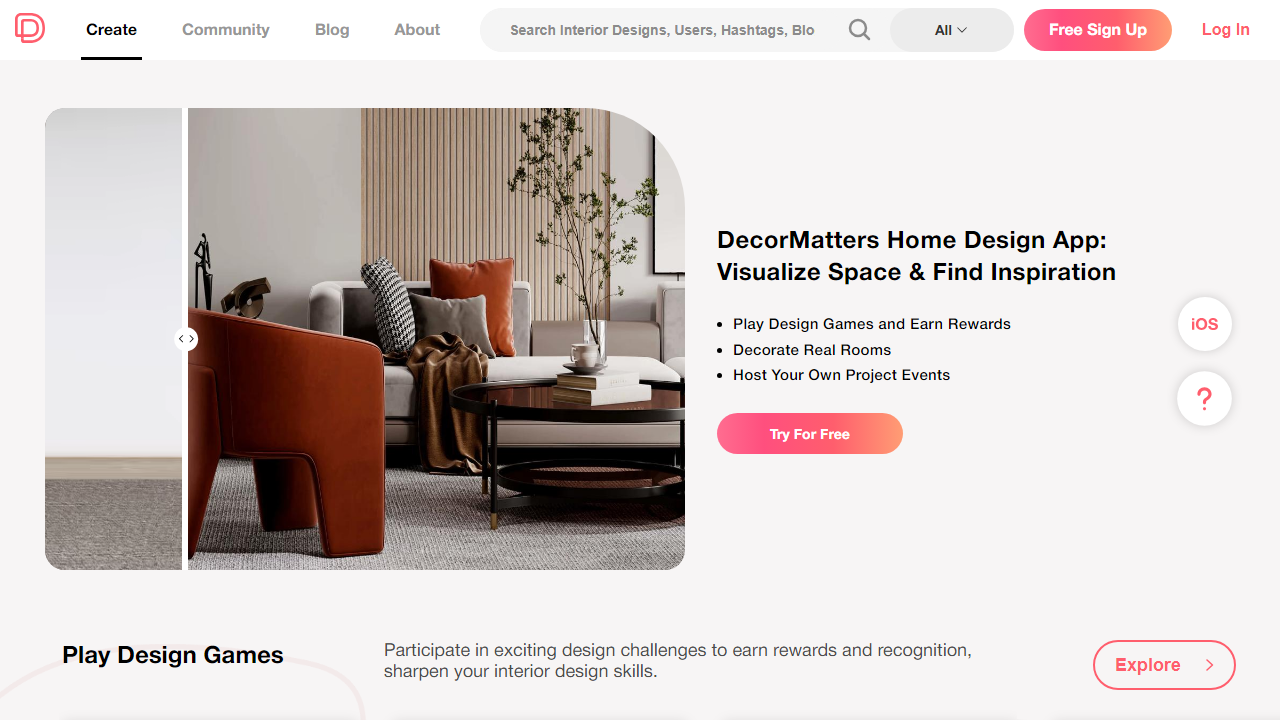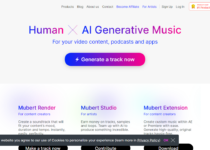AI Sketch to Image Generators 2024
Introduction to AI Sketch to Image Generator
- Introduction to AI Sketch to Image Generator
- Understanding the Technology behind AI Sketch to Image Generator
- Nvidia Canvas - A Game Changer in AI Sketch to Image Generation
- Roughly App - Simplifying Sketch to Image Generation
- Draw3D Online - Taking 3D Image Generation to the Next Level
- Vizcom - The future of product visualization
- Canva – Sketch to AI Art
- The Future of AI Sketch to Image Generators
Artificial intelligence (AI) has undergone numerous transformations and breakthroughs over the last decade, giving birth to innovative tools and systems. One such creation from the realm of AI is the Sketch to Image Generators. These AI-powered tools are designed to convert sketch drawings into vivid and detailed images, fostering a new realm of creativity and design process.
AI Sketch to Image Generators function by using algorithms to interpret and refine sketch lines, color them, based on a vast range of datasets. They streamline an artist’s work, letting a rough sketch turn into a professional piece of artwork in no time. This is why these generators are gaining traction rapidly in the creative industry. It’s not just artists that find them beneficial; even interior designers, architects, digital marketers, and other professionals who require visual content in their tasks also value these tools.
As we move forward in the article, we will dig deeper to explore some of the best AI Sketch to Image Generators of 2024, their features, benefits, and applications. But before that, it’s essential to understand the revolution in AI and Machine Learning, paving the path for these innovative tools.
Understanding the Technology behind AI Sketch to Image Generator
The technology underpinning AI Sketch to Image Generators is a combination of machine learning, neural networks, and deep learning – all branches of artificial intelligence. Let’s dive deeper into understanding how these technologies intertwine to bring such generators to life.
Machine Learning: This is an AI subset that permits systems to learn and improve from experience autonomously without being explicitly programmed. A machine learning model is fed a load of data, which it uses to make decisions or predictions accurately in the future based on patterns and information learned from the dataset. In the context of Sketch to Image Generators, machine learning models are trained on abundant images and their corresponding sketches to learn to generate colour images from line sketches.
Neural Networks: These are a set of algorithms designed to recognize patterns by interpreting sensory data through a kind of machine perception, labeling, or clustering raw input. These algorithms help systems to learn and make judgments as a human brain would. As a powerful form of machine learning, neural networks are crucial in Sketch to Image Generators as they help the system to perceive the lines in the sketch and decipher what the visual subjects are.
Deep Learning: This is a subfield of machine learning, which is essentially about neural networks with three or more layers. These neural networks attempt to simulate the behavior of the human brain—albeit far from matching its ability—to absorb data in a way that can make an intelligent decision based on it. ‘Deep’ in deep learning refers to the depth of layers through which data passes in this neural network’s structure. AI Sketch to Image Generators use deep learning for colorizing, texturing, and refining the images generated from sketches.
This triad of AI technologies has dramatically evolved over the years, enhancing image resolution, reducing processing time, and improving overall performance in sketch image generation. The continuous progress in these areas has enabled us to reach the stage where AI can transform sketches into realistic and detailed images.
Nvidia Canvas – A Game Changer in AI Sketch to Image Generation
One of the top-rated AI Sketch to Image Generators currently on the market is Nvidia Canvas. Leveraging the power of AI, it has significantly disrupted the creative landscape and redefined digital artistry.
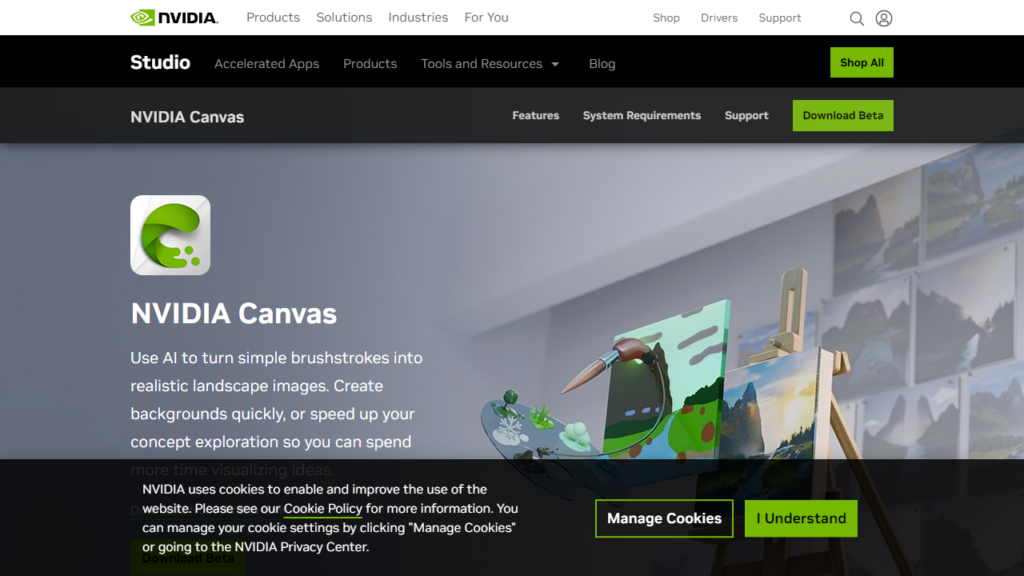
Features: Nvidia Canvas comes packed with a host of features. It has an intuitive interface that allows the user to draw the basic shapes and lines and AI to convert it to a realistic image. The tool supports a wide range of natural elements like grass, sea, sky, clouds, fire, etc., which users can directly use in their sketches. Nvidia Canvas also allows users to fine-tune and make real-time adjustments to the final generated images.
How it works: Nvidia Canvas operates on Nvidia’s GauGAN model, a generative adversarial network (GAN). It has a real-time understanding of segments like sky, trees, mountains, and translates blobs of colors into such images based on the user’s sketch. These networks have been trained on numerous images to understand and generate these segments. The GAN consists of two models where one creates the image and the other cross-checks it with real data to optimize it.
Why it stands out: The real-time nature of the feedback is a major factor that sets Nvidia Canvas apart from other sketch to image generators. As soon as the user sketches or modifies anything on the canvas, the images instantly update. This enables rapid prototyping of visual concepts and a smoother creative process. Furthermore, paired with the power of Nvidia’s GPUs, the AI model behind Canvas offers high precision and realistic outputs, making it a game-changer in the digital art landscape.
Roughly App – Simplifying Sketch to Image Generation
Another noteworthy tool in the AI sketch to image generation space is the Roughly App. This app offers a straightforward and hassle-free way to breathe life into your sketches.
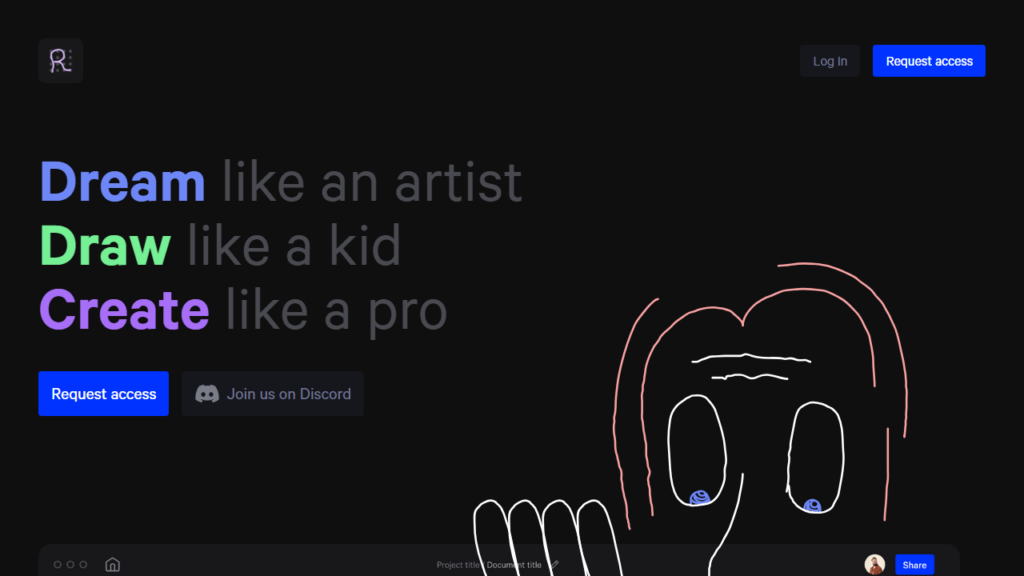
Features: What sets Roughly App apart is its impressive simplicity and user-friendly interface. The tool is primarily designed to help users quickly visualize their ideas without getting bogged down in the details. It offers a variety of presets and filters that users can try on their sketches. The App also provides a colouring feature, allowing users to colour the sketches manually and personalize the image generated.
How it works: Roughly App uses AI capabilities to add colors, textures, and details to the sketches. Once a user uploads a sketch, it processes the input using its trained neural network, recognizes the pattern, and fills it with predefined or customized colors and textures. This advanced AI ability facilitates an intuitive creative process and simplifies sketch to image generation.
Why it’s popular: One primary reason that Roughly app is gaining popularity is its simplification of the sketch-to-image generation process. With just a few taps, one can go from a rough sketch to a vibrant, textured image. This ease of use is something that users highly appreciate. With Roughly App, it doesn’t matter if you’re a professional artist or an amateur; the tool caters to everyone. Plus, the added control that it allows over the creation process endears it further to its user base.
Draw3D Online – Taking 3D Image Generation to the Next Level
Venturing into the realm of 3D imaging, Draw3D Online is an AI-powered tool that stands distinct in its category. By enabling the conversion of 2D sketches into 3D models, this platform has made 3D image generation accessible and straightforward.
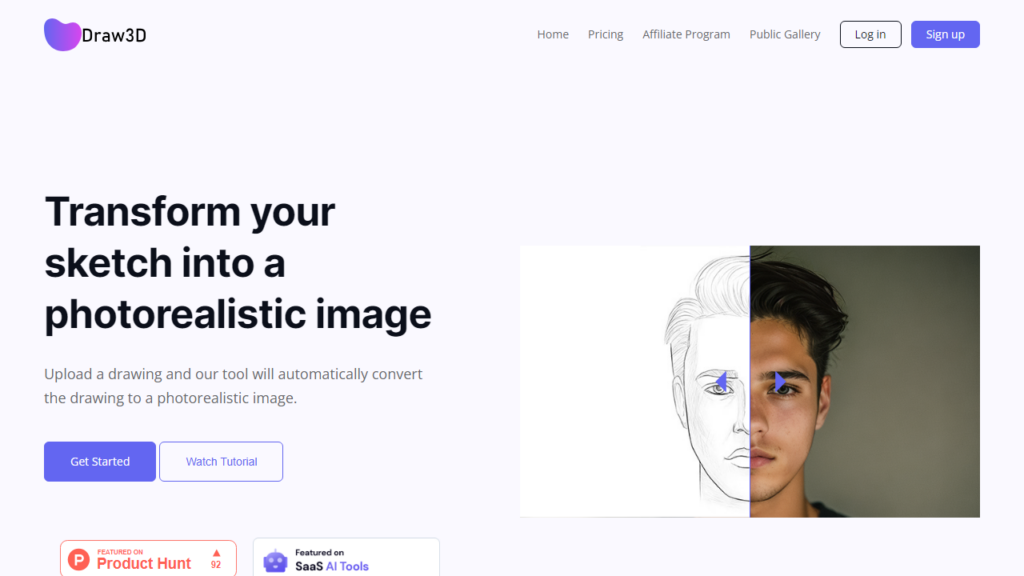
Features: Draw3D Online is specifically incorporated with features to facilitate 3D model generation. It allows users to input lines, shapes, and volume commands to draw in three dimensions. The tool also lets users modify the intensity of texture and light effects, providing a customized and realistic 3D experience. Best of all, no prior 3D modeling experience is needed to use the platform.
How it works: At its core, Draw3D Online uses AI to interpret the input lines and shapes, along with the volume information provided, to generate a 3D model. The user simply draws a sketch, adds volume where necessary, and the AI constructs a 3D image from it. The process is simple and intuitive, making it a go-to tool for those interested in 3D design.
Why it stands out: The tool holds its appeal thanks to its focus on converting 2D lines into 3D models, a feature not commonly found in other AI Sketch to Image Generators. It’s an incredible way for users to step into the 3D modeling world without the need for complicated software or extensive learning curves. Whether you’re a designer looking to quickly prototype a design concept or a hobbyist exploring 3D modeling, Draw3D Online is an invaluable tool.
Vizcom – The future of product visualization
Navigating the emerging terrain of AI Sketch to Image Generators, both Vizcom and SketchImage are noteworthy entrants. These platforms promise innovative features and functions that make them worth exploring.
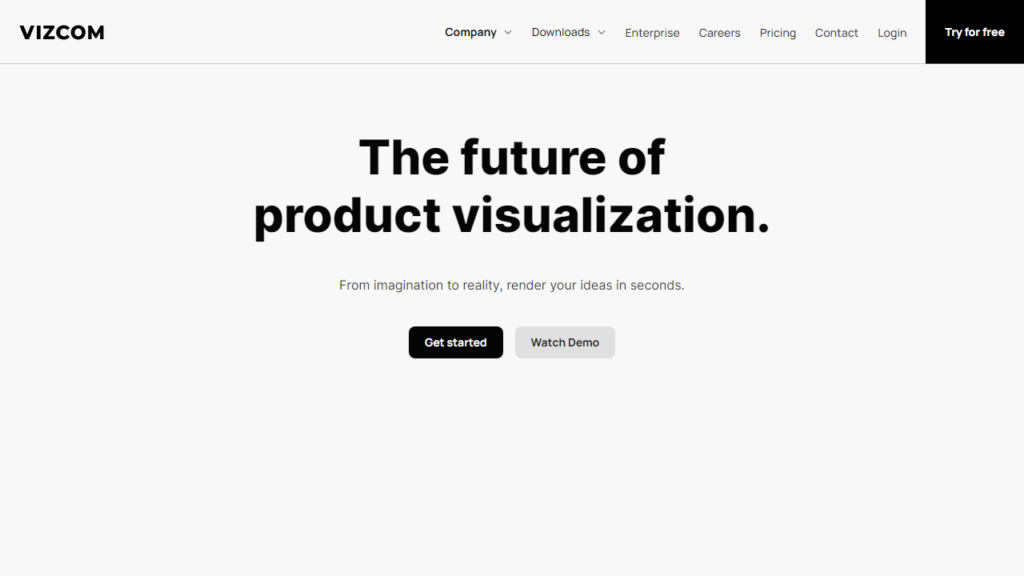
Features: Vizcom is an AI-powered tool that emphasizes streamlining communication between designers and clients. It offers features such as design suggestion and auto sketch-to-image conversion, which adds to an efficient creative process. What’s truly unique about Vizcom is its communication platform that allows collaboration and direct feedback, making it more than just a sketch-to-image software.
How it stands out: Vizcom’s focus on enhancing designer-client communications takes it a notch above conventional AI sketch-to-image converters. It works as a bridge, simplifying the dialogue between creative professionals and clients while also providing high-quality image generation capabilities.
Canva – Sketch to AI Art
Canva, the popular graphic design platform, has been making waves with its incorporation of AI-powered tools, one of which is the AI Sketch to Image Generator, known as the AI Art tool. This feature brings a new level of innovation and convenience for Canva users, artists, and designers alike.
Features: Canva’s AI Art tool offers a wide range of features to turn basic sketches into a mesmerizing piece of artwork. It includes various filters and overlays that can add depth and flair to the final image. Additionally, the integration of this tool within Canva’s comprehensive design platform gives users the flexibility to incorporate their generated art directly into various design formats, from social media posts to presentations.
How it works: The AI Art tool of Canva uses machine learning algorithms, which are trained on vast datasets of art designs and images. When a user inputs a sketch, the AI interprets the design, suggests the matching graphics, and also allows image colorization. The tool allows real-time modifications, meaning changes in the sketch are instantly reflected in the generated image. It marries user input and AI suggestions to create superb art designs.
Why it’s a great option: Canva’s AI Art tool is a powerful ally in digital design and artwork creation. Its intuitive and user-friendly operation makes it an excellent choice for both professional designers and beginners. Furthermore, Canva, being a comprehensive design tool, can seamlessly integrate the generated images into various projects, whether they are social media graphics, presentations, or posters. This gives users the ability to use their AI generated art across a multitude of formats, making Canva’s Sketch to AI Art a versatile tool.
The Future of AI Sketch to Image Generators
AI Sketch to Image Generators are already revolutionizing digital design and illustration. As we look forward, the potentials for this technology seem limitless, much like any other technology driven by artificial intelligence. With ongoing technological advancements and increasing adoption, we can expect to see more refined and innovative tools in the future.
Advancements: Future iterations of sketch to image generators could leverage even deeper learning models and more advanced algorithms to provide higher-resolution images, improved accuracy, and a broader array of styles. Combining AI with augmented reality could pave the way for real-time 3D sketch to image conversions. It’s also foreseeable that we might see advancements in user interface design for sketch to image tools, making them more approachable and intuitive.
Challenges: While the technology holds incredible promise, it also faces challenges. One of the key challenges is ensuring the AI sufficiently understands and interprets the user’s creative intention. Making the technology accessible to everyone, regardless of technical prowess, is another ongoing challenge. Learning to balance the leap in AI technology while keeping it user-friendly will be pivotal in the coming years.
Impact: The future of AI Sketch to Image Generators is not just limited to the field of arts and design. These technologies have potential applications in various fields, like education, game design, fashion, architecture, and medicine. For instance, they might be used to visualize historical events in education or create prototypes for fashion items or architectural structures.
Ultimately, the future of AI Sketch to Image Generators is set to be exciting and transformative, promising an innovative blend of creativity and technology.


